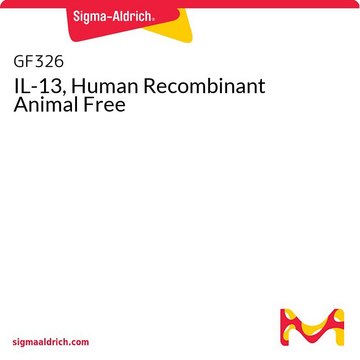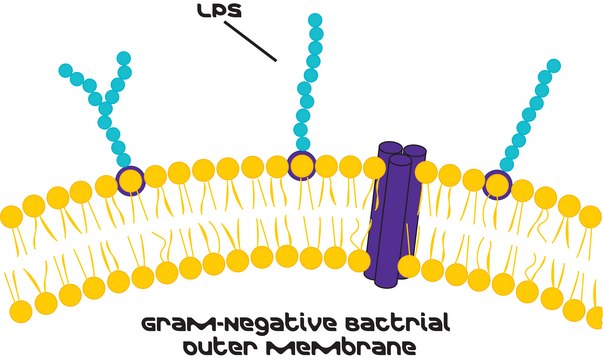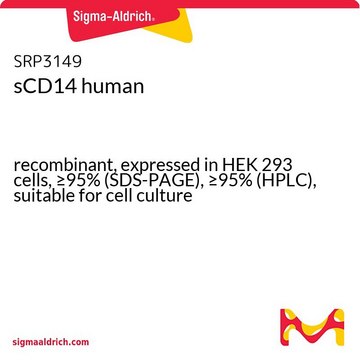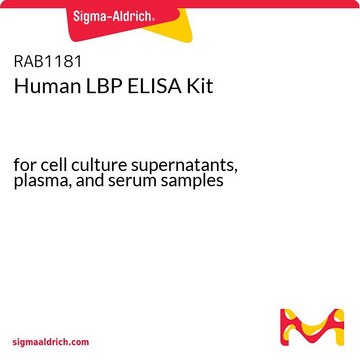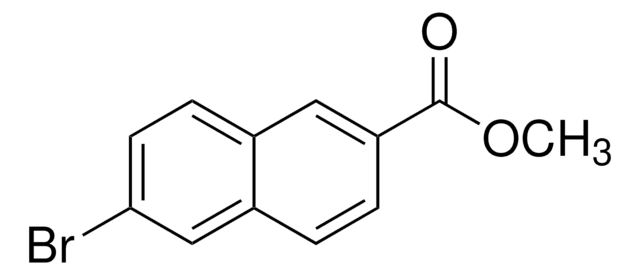SRP6033
LBP human
recombinant, expressed in CHO cells, 90-95% (SDS-PAGE)
Synonym(s):
Lipopolysaccharide-binding protein
Sign Into View Organizational & Contract Pricing
All Photos(1)
About This Item
UNSPSC Code:
12352200
NACRES:
NA.32
Recommended Products
General description
Natural lipopolysaccharide binding protein (LBP) is a 58kDa glycoprotein produced in liver. This is a His-tagged protein. It is part of a family of lipid-binding proteins. The gene encoding this protein is localized on human chromosome 20q11.23.
Biochem/physiol Actions
Lipopolysaccharide binding protein (LBP) binds at lipid A of lipopolysaccharide (LPS) with high affinity (10-9M) and reduces the cellular LPS effects at CD14+ cells (IL1β, IL6, TNF-α). It acts as opsonin for GRAM negative cells, LPS, neutrophils and granulocytes. It transfers LPS to its receptor and this leads to an active inflammatory response. LBP also binds to LPS-coated erythrocytes. The protein has a role in innate immune responses against Gram-negative bacterial infections.
Physical form
Lyophilized from a concentrated protein solution (0.25 mg/ml) containing PBS, pH 7.1
Reconstitution
Centrifuge the vial prior to opening. Reconstitute in sterile distilled H?O or aqueous buffer containing 0.1% BSA to a concentration of 0.1-1.0 mg/ml.
Storage Class Code
11 - Combustible Solids
WGK
WGK 3
Flash Point(F)
Not applicable
Flash Point(C)
Not applicable
Regulatory Information
新产品
Choose from one of the most recent versions:
Certificates of Analysis (COA)
Lot/Batch Number
Don't see the Right Version?
If you require a particular version, you can look up a specific certificate by the Lot or Batch number.
Already Own This Product?
Find documentation for the products that you have recently purchased in the Document Library.
Copy number polymorphisms are not a common feature of innate immune genes.
Linzmeier RM and Ganz T
Genomics, 88(1), 122-126 (2006)
Serum LBP Is Associated with Insulin Resistance in Women with PCOS.
Zhu Q
PLoS ONE, 11(1), e0145337-e0145337 (2016)
Robert S. Jack
CD14 in the Inflammatory Response null
Low levels of microbial translocation marker LBP are associated with sustained viral response after anti-HCV treatment in HIV-1/HCV co-infected patients.
Nystrom J
PLoS ONE, 10(3), e0118643-e0118643 (2015)
Lipopolysaccharide-binding protein is bound and internalized by host cells and colocalizes with LPS in the cytoplasm: Implications for a role of LBP in intracellular LPS-signaling.
Kopp F
Biochimica et Biophysica Acta, 1863(4), 660-672 (2016)
Our team of scientists has experience in all areas of research including Life Science, Material Science, Chemical Synthesis, Chromatography, Analytical and many others.
Contact Technical Service
